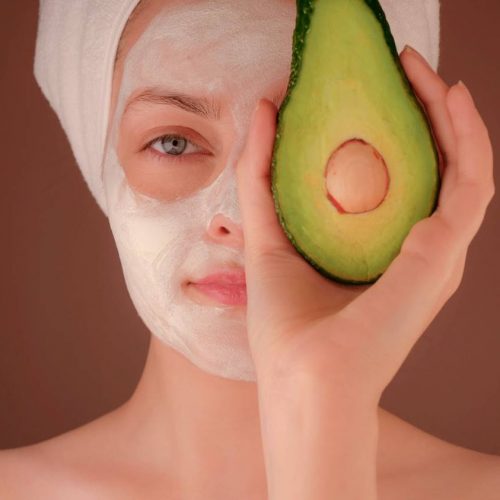Here is a quick challenge for you: Count the number of personal care products you use every day and look at the ingredients of each product. Does the number surprise you? Do you know what those ingredients can do to your body? If you don’t, don’t worry. You are not the only one. The majority of us do not understand the meaning behind those long words. Unfortunately, this is why sometimes we get deceived by the product packaging and branding, believing that they are safe and good to use on our bodies. The truth is, they can have chemicals that pose risk to serious health problems, including cancer.
If you pay close attention you will realize that we are becoming more dependent on these products. A survey by the Environmental Working group shows that American women use 12 products every day, averaging 168 total ingredients. It is almost like we are addicted. Vogue introduced an article about the Toxic Beauty documentary and it begged a question: Are Skin-Care Products the New Cigarettes? Think about it, chances are we may be harming ourselves unintentionally. Why would we allow this to happen and how can we change this? In this blog, you will find a few answers to those questions. First, take a look at the list of ingredients you should avoid to make a better shopping decision. These ingredients are not only related to some of the adverse health problems, they can also pollute the environment.
1. Butylated hydroxyanisole (BHA) and butylated hydroxytoluene (BHT) are used
as a preservative that is linked to endocrine disruption and skin irritation.
2. Dibutyl and diethylhexyl phthalates are added to fragrance mixtures as stabilizers which disrupt hormones and harm the reproductive system.
3. Formaldehyde (a known carcinogen) is often used as hardeners in nail polishes.
4. Formaldehyde releasing agents (such as diazolidinyl urea & quaternium 15), are
also used as preservatives that are linked to cancer and skin sensitivity.
5. Mercury, which can harm the kidneys and nervous system.
6. N-Ethyl Pentedrone (NEP) and N-Methyl-2-pyrrolidone (NMP) are typically used
in synthetic eyelash and nail glues, nail polish removers, and lotions that are
potentially toxic to development when exposure is chronic, especially during
pregnancy may affect the health and weight of the fetus.
7. Oxybenzone is often found in sunscreen used for blocking ultraviolet rays. It is an
endocrine disruptor.
8. Parabens are used as preservatives that can disrupt hormones and damage the
reproductive system.
9. Per- and poly-fluoroalkyl substances (PFAS), also known as “forever chemicals”
are often added to personal care products and cosmetics such as moisturizers,
dental floss, foundation, and concealer to make them waterproof or give them a
“slippery” feel. These chemicals can accumulate in the body and are linked to cancer
and thyroid disease.
10. Siloxanes are used in products to moisten or prime skin and hair. They are linked to skin irritation and they are toxic and persistent when entering aquatic ecosystems.
11. Talc is found in pressed and loose powders, such as baby powder. It is linked to
ovarian cancer and inhaling it in loose powder form may be harmful to the lungs.
Most of them are banned by the European Union and many other nations but are only planned for removal from some major U.S. retailers, including Target, Rite Aid, Walgreens, and CVS Health. Some are already banned from the products sold by Whole Foods. The sad news is, some of these chemicals are not required to be disclosed on the package, because they are components of fragrance.
Fragrance is exempt because it is considered to be a company’s trade secret. It contains common ingredients that can be found in perfumes and colognes, personal care products, cosmetics, cleaning products including unscented products. For example, dibutyl phthalate and diethylhexyl phthalate may be disclosed on the label as fragrance but may not be disclosed as individual chemicals.
Those products that claim to be safe may harm you. As Rose-Marie Swift said in Toxic Beauty, “they said from the beginning cigarette smoke was safe, Mercury was ‘safe’ back in the day, arsenic was ‘safe’.” Think about the case of Johnson’s Baby Powder, weren’t you shocked that it contained carcinogen like Talc while they swore under oath that the talc was safe. From here, we can easily come up with a conclusion: the regulation of the consumer industry is not doing its job.
It has been 80 years since the United States Congress passed the consumer industry legislation. The Canadian Environmental Protection Act (CEPA) that regulates toxics, is also over 20 years old. Under current laws, there is minimal regulation over the cosmetics industry. For example, the Food and Drug Administration (FDA) does not have the authorities to suspend registration or order recalls when products pose a risk of adverse health consequences. We need new legislation that carefully examines the manufacturing of the products and ensures protection from harmful chemicals. We need the ingredients to be transparent and listed on the package so that customers can make informed decisions.
Besides these, we also face problems of greenwashing. Imagine when you see a package that has green color and has all these labels/words that say ‘eco-friendly’, ‘natural, ’pure’, you will soon associate them as healthy, safe to use products even if they are not. When we buy any eco-friendly product, we have to make sure that the product is truly green by checking their ingredients. If you are interested, read our greenwashing blog to find more details on how to avoid greenwashing.
If you care about your health, stay away from these products. Try to use healthy authentic organic products when you can. There are many options in the market but if you need a suggestion, consider our trusted brand Annmarie Gianni. Their skincare products are natural, wildcrafted, and organic. They also have all-natural and cruelty-free makeup, and natural and organic essential oils.
Green Schools Green Future values partners who carry the same goal as us – encouraging green living and sustainable development. A portion of your purchase will be donated to fund our projects. Help us bring laughter and a bright future to the children in developing communities by donating ici.
Sources:
https://www.ewg.org/californiacosmetics/toxic12
https://environmentaldefence.ca/toxicten/
https://www.vogue.com/article/toxic-beauty-documentary
https://www.annmariegianni.com/?idev_id=2300&idev_username=GSGF
Blog Image Credit: Kimia Zarifi on Unsplash

By Maria Chen


